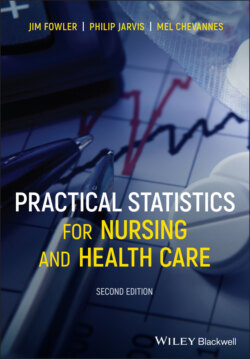Читать книгу Practical Statistics for Nursing and Health Care - Jim Fowler - Страница 13
2.2 Populations, Samples and Observations
ОглавлениеIn statistics, the term ‘population’ is extended to mean any collection of individual items or units that are the subject of investigation. Characteristics of a population that differ from individual to individual are called variables. Length, age, weight, temperature, and number of heart beats per minute, are examples of variables to which numbers or values can be assigned. Once numbers or values have been assigned to the variables, they can be measured.
Because it is rarely practicable to obtain measures of a particular variable from all the units in a population, the investigator has to collect information from a smaller group or sub‐set that represents the group as a whole. This sub‐set is called a sample. Each unit in the sample provides a record, such as a measurement, which is called an observation. The relationship between the terms we have introduced is summarized below:
| Observation: | 3.62 kg |
| Variable: | weight |
| Sample unit (item): | a new‐born male baby |
| Sample: | those new‐born male babies that are weighed |
| Statistical population: | all new‐born male babies that are available for weighing. |
Note that the biological or demographic population would include babies of both sexes and, indeed, all individuals of whatever age or sex in a particular community.
